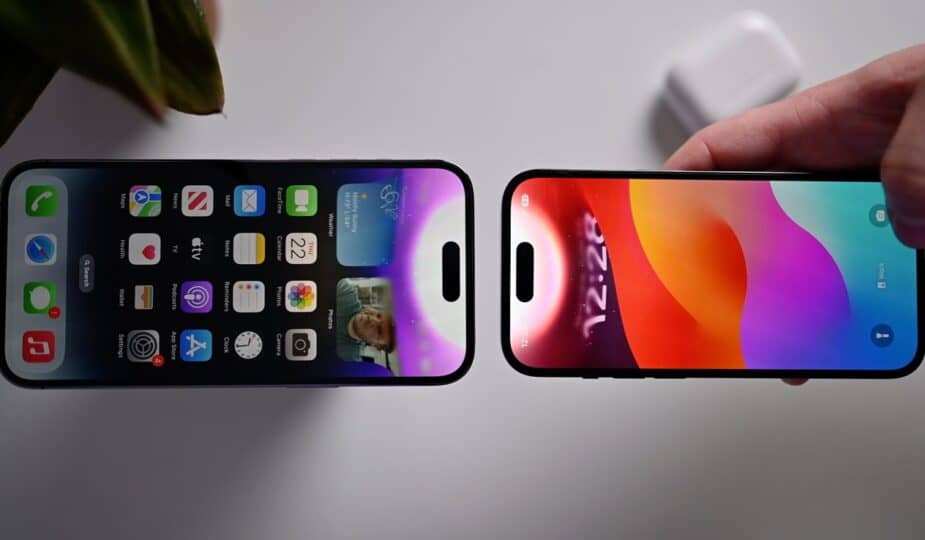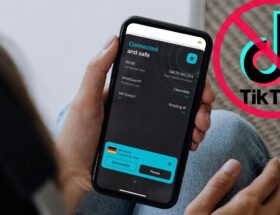Share Contacts on iPhone
 2 Facebook x.com Reddit
2 Facebook x.com Reddit
Before you panic: No, people can't steal your credit cards via AirDrop.
Another iPhone conspiracy theory video has surfaced on TikTok. This time, the rumor warns users that AirDrop can be used to give anyone unlimited access to “everything” stored on your iPhone, including anything stored in Apple Wallet.
It's unclear what the source of the rumor is, but creators like @vanessaromito13 are advising users to go into settings to disable AirDrop sharing.
@vanessaromito13 #honestreview #iphone #everyone original sound – Vanessa Romito
In the video, @vanessaromito13 gives users instructions on how to turn off “find from other iPhones,” which is not a feature that exists. Presumably, she's actually telling users to turn off either “device pairing” or the ability to AirDrop from anyone, a feature that must be turned on and turns off after 10 minutes.
In another video spotted by the Daily Dot, @the_journey76 claims that attackers can “get past you now and from one iPhone to another using this AirDrop setting, they can get all the cards in your wallet. In your Apple Wallet.” He urges users to turn off AirDrop entirely as a precaution.
Both videos place the blame on a “recent update,” which at the time was iOS 18.1, which came out in October. And as expected, the comments sections of these videos are filled with both critics and defenders of Apple.
But before you go throwing your iPhone in the nearest trash can, just remember: outrage and panic are common tactics for engaging with content. These kinds of rumors spread quickly on social media, often morphing and turning into entirely new ones.
The thing is, you can't use AirDrop to transfer your credit or debit card details to another user. Not only would that be a huge liability for Apple, but it wouldn't be a particularly useful feature to begin with.
There aren’t many instances where a user would actually need to provide their card details directly to another iPhone user. If you’re paying someone, you’ll likely be using an app like Zelle, Venmo, PayPal, or even Apple’s built-in payment features like Apple Pay via iMessage or Tap to Pay on the iPhone.
So if that’s not a big deal, you’re probably wondering where these content creators got this idea from in the first place. It’s probably a little more difficult to figure out, but it’s probably a combination of many different issues.
In iOS 17, Apple made it easy for users to share contact information with a new feature called NameDrop. NameDrop allows users to easily share relevant contact information along with their contacts poster using an NFC tap.
The feature is useful for sharing information with someone without having to type it out in full. However, there have also been concerns that the feature could be used for stalking, but there are precautions in place to prevent this.
Most recently, a new feature in iOS 18.1 allows users to grant remote access to their Apple devices via FaceTime. As the Daily Dot notes, the feature requires explicit permission, and access can be revoked at any time.
And even if someone has opened your Wallet app while remotely accessing your device, the app itself doesn’t provide much useful information. The card numbers are hidden, with only the last four digits visible.
It’s still possible to get scammed through Apple Pay, though. In May, AppleInsider learned of an Apple Pay scam in which scammers mistakenly charge users extra money using the iPhone’s tap-to-pay feature.
Instead of AirDrop, these scams rely on scammers targeting particularly stressed people and hoping they don’t notice the extra charge until it’s too late.
Scams like these also take advantage of near-field communication (NFC) chip transfers, like Apple Pay’s tap-to-pay feature. In these scenarios, a potential scammer can sneak up and “steal” the transaction by holding their phone near a busy payment point, like at a music festival or convention.
That’s why it pays to be vigilant. Don’t leave the Apple Pay screen open until you’re ready to pay. It’s also important that you see the transfer amount before you hold your device near the payment point.
If you’ve been scammed, contact the relevant bank. While Apple may make your iPhone, they have no control over how you use it. Your bank or credit card issuer, on the other hand, has a say in where your money goes.
Follow AppleInsider on Google News










